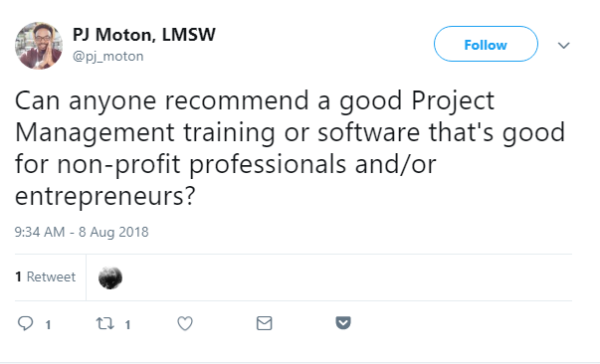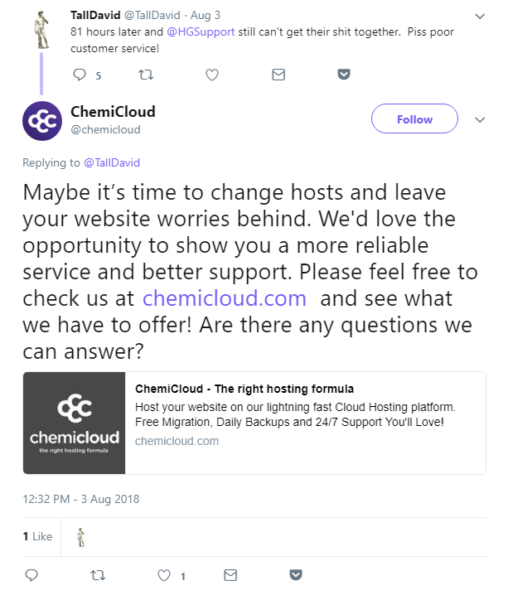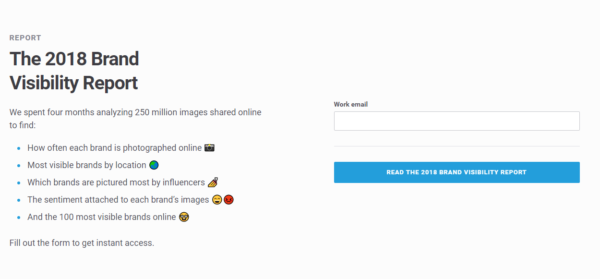— August 24, 2018
Nowadays there’s no need to assure you that social media is an incredibly rewarding tool for lead generation – in 2018 it seems obvious. And how could it not be – it’s easily available to anyone, and it functions on the principles of engagement and communication, which makes it perfect for a marketing specialist.
The truth is, social media lead generation is slowly taking over traditional ways of lead generation, such as cold phone calls, even in the most conservative area of marketing – B2B marketing. According to various studies, more than half of decision-makers ignore cold calls and email blasts. Add it to the 76% of consumers who are ready to engage in a conversation with a brand on social media – and we have a clear winner. Social media is becoming the biggest source of quality leads for most businesses, and you don’t want to fall behind this trend.
Nevertheless, many marketers name lead generation on social media as their biggest challenge. It’s quite an intricate process for many reasons: you need to clearly understand your target audience, stay on top of social trends and not get lost in all the metrics.
This article will help you navigate the world of social media lead generation by describing some of the most effective ways to do it. With all that said, I’d like to point out that there’s a word “creative” in the title – so I will not be talking about straight up social media advertising in this article. Not to say that it doesn’t require creativity, but today we are looking into some more unconventional techniques.
Social Selling
The traditional sales funnel includes four stages:
- awareness,
- consideration,
- decision,
- and retention,
…with lead generation happening at the second stage. Social media makes this stage more complicated, or, rather, more elaborate, because it gives a consumer more opportunities for research. Moreover, with some tactics, the line between consideration and decision is getting blurry. And that’s when social selling steps in.
Before social media became so ubiquitous, you would discover the product’s website, maybe read some articles about it and look up the reviews (if there were any) and that’s it. The research would end here.
Now you are able to post “Please, recommend me an SEO tool!” on your Facebook page and get several options offered to you by people you trust – your friends and colleagues. This is a good old word-of-mouth marketing with a XXI century twist to it.

The good news for brands is that you’re not excluded from these conversations. You can chip in and suggest checking out your product, and the beautiful thing about it is that you don’t have to convince them that they need it – they are aware of it already!
Moreover, since the interaction is happening on social media, you have a chance to pitch every lead in a personal and genuine manner (since you know more about the prospect than just an email address). As you surely understand, this raises the chances of conversion exponentially.
How to apply: social selling
The obvious question here is how to find these leads. Nobody has the time to browse Twitter looking for people desperate to try out your product. That’s why this is the perfect task for a social media monitoring tool which searches and collects any given query on social media.
A great way to get leads with a social listening tool is by monitoring your competitors. You simply find people who are dissatisfied with their products and show them in what way your product is superior. Your attention and consideration will be greatly appreciated and that’s a sure way to get a new customer.

Community engagement
As I said, it’s very unlikely that you will be bothering with monitoring social media manually, when looking for promotional opportunities. But social listening tools, no matter how exceptional they are, are not able to find all the social leads. Sometimes people word their questions in such ways that a software just wouldn’t be able to recognize the interest behind the words.
And some areas of social media are simply out of reach for any tool. But fortunately, these are exactly the areas we’re interested in: closed communities with engaged and cooperative members.
A general golden rule of lead generation is that it’s a game of numbers. Out of 100 cold calls, you will get one quality lead so the more calls you make, the more leads you have. However, I beg to differ. The game of numbers idea was relevant when we knew next to nothing about our target audience and had no opportunities to communicate with them as equals – but nowadays it’s just outdated. It’s better to pitch a close community of 1000 interested leads than cold call a 10000 of indifferent random people you found in a third-party database.
How to: community engagement

This tactic definitely takes time and effort but as a part of your marketing routine, it will work wonders. The first step is to find the relevant communities and platforms. Join Twitter chats, subreddits, Facebook and LinkedIn groups etc.
The second step is, quite clearly, engaging. The rule of thumb here is not to be overly promotional and pitch every member of a community. Be genuine and offer your expertise. If you’re selling SEO tools – describe how you can use a tool to solve the member’s problem, if you’re promoting self-help books – give life advice along with an Amazon link. The success of any lead generation tactic depends on connection with a consumer so spend your time establishing it.
Promote gated content
Even though the brave new world of social selling is exciting, you shouldn’t put all your eggs in one basket. Conducting mailing lists is still an effective strategy (and you can use those soft leads for laser-focused ads targeting as well).
One of the best ways to get emails is through gated content: the content which is available to users in exchange for their email address.

Needless to say, this content should be exclusive, useful and entertaining. Obviously, you need social media to promote it, since the landing page won’t have that much information. Create a unique and useful content, “hook” your social media audience with a surprising fact or unbelievable statistics which will make them want to read it and get their email.
Here are some ideas for gated content (you’ll find that a different kind of content is needed for B2B and B2C marketing):
- E-books
- Case studies
- Research reports
- Webinars
- Quizzes
- Cheat sheets and checklists
- Apps and games
- Downloadable tools
How to: gated content
You should show how valuable content is right from the beginning. If it’s statistics, include an unexpected number in the text of a social media post or show a part of an infographic.
Since this kind of content is, in most cases, evergreen you can schedule it for publishing several times – the number will depend on the platform. For example, on Twitter, you can post the same link several times a week, on LinkedIn – no more than two-three times a month.
Contests
Contests and giveaways are one of the most successful forms of lead generation – everyone loves gifts. But it’s important to tailor it to your desired target audience, otherwise, you’ll get a bunch of bad quality leads with no interest in buying.
The trick to a good contest? Make sure the price is something your target audience actually wants. Make it about your product and make the product look as attractive as possible.
How to: contests
This is a perfect opportunity to kill two birds with one stone: get leads and more exposure. Make sharing on social media about your brand, either through repost or user-generated content one of the conditions necessary to win, and you’ll get emails and make new audiences aware of your brand at the same time.
Influencer marketing

Influencer marketing is not just for celebrities in TV commercials. Actually, when we are talking about influencer marketing, we’re talking about a close-knit community of people, rather than fans.
Influencers have an audience who trusts them and that’s why their recommendations are more effective. Consumers value authenticity and while the perception of brands as “authentic” is quite rare, influencers make authenticity the core of their relationships with the audience. It’s no surprise that investment in influencer marketing are only going to increase in the future.
How to: influencer marketing
There are four steps to doing influence marketing right:
- Target. Map out influencers relevant to your industry. You can use a social listening tool for that or just look at speakers at industry events, blogs authors, content creators etc.
- Research. Learn more about their audience and content. This will help you to create a marketing strategy that will benefit both of you.
- Execute. You can have various types of agreements with an influencer, but the best-case scenario is that they will become your brand ambassadors and will bring you leads regularly.
- Measure your results. From an SEO perspective, It is much easier to measure the success of an influencer marketing campaign compared to some other types of campaigning. You can track the link an influencer shares with their audience and find out what’s your leads buying behavior like.
What can you do?
When I was writing this article, structuring all the knowledge and experience I have in one document, I realized one thing: in the age of audience insights with so much consumer information at the tip of marketer’s fingers, traditional ways of lead generation are simply outdated. Therefore I encourage you to explore and come up with your own ideas for generating quality leads.
Digital & Social Articles on Business 2 Community
(11)
Report Post






